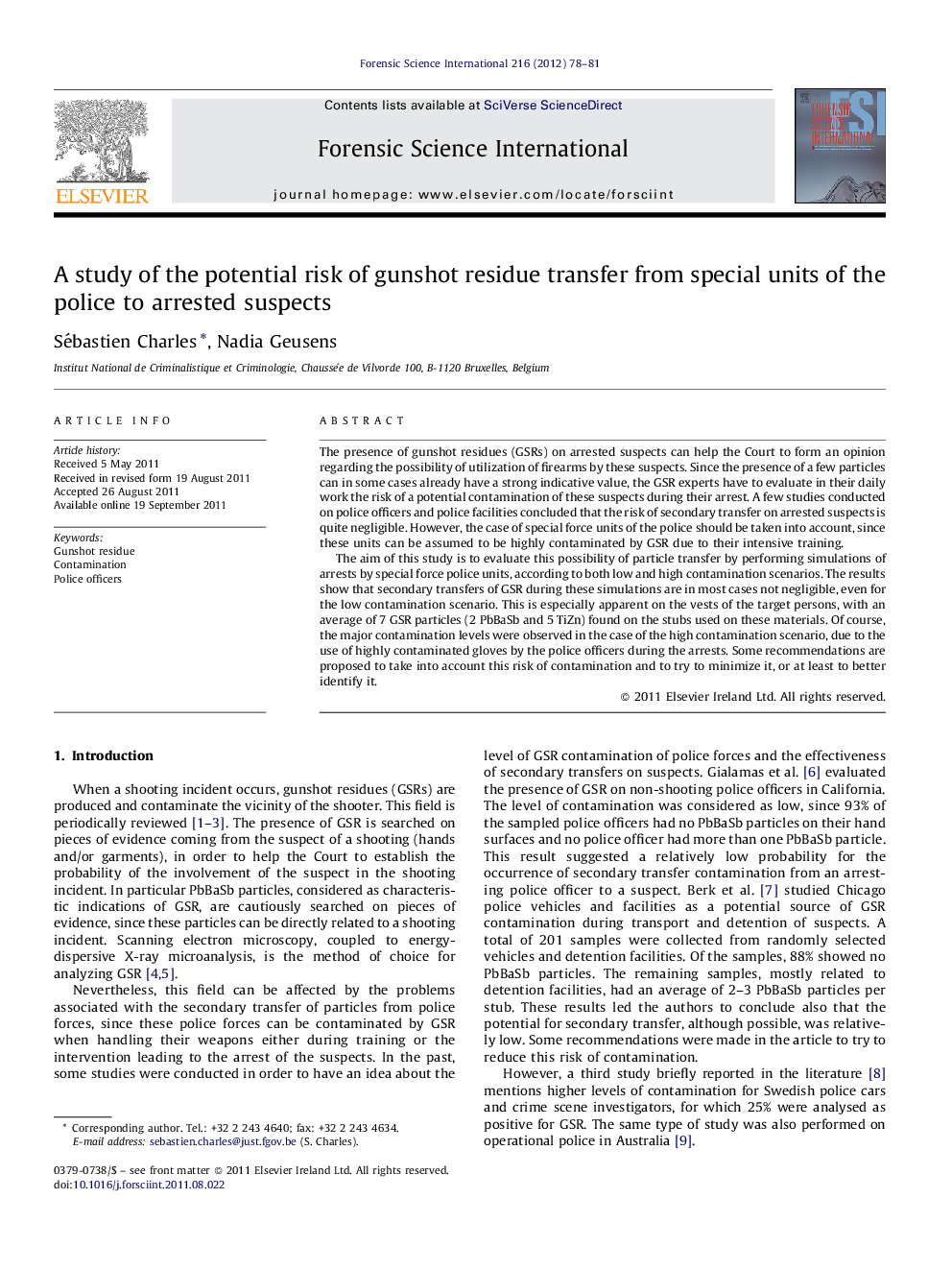| Article ID | Journal | Published Year | Pages | File Type |
|---|---|---|---|---|
| 96097 | Forensic Science International | 2012 | 4 Pages |
The presence of gunshot residues (GSRs) on arrested suspects can help the Court to form an opinion regarding the possibility of utilization of firearms by these suspects. Since the presence of a few particles can in some cases already have a strong indicative value, the GSR experts have to evaluate in their daily work the risk of a potential contamination of these suspects during their arrest. A few studies conducted on police officers and police facilities concluded that the risk of secondary transfer on arrested suspects is quite negligible. However, the case of special force units of the police should be taken into account, since these units can be assumed to be highly contaminated by GSR due to their intensive training.The aim of this study is to evaluate this possibility of particle transfer by performing simulations of arrests by special force police units, according to both low and high contamination scenarios. The results show that secondary transfers of GSR during these simulations are in most cases not negligible, even for the low contamination scenario. This is especially apparent on the vests of the target persons, with an average of 7 GSR particles (2 PbBaSb and 5 TiZn) found on the stubs used on these materials. Of course, the major contamination levels were observed in the case of the high contamination scenario, due to the use of highly contaminated gloves by the police officers during the arrests. Some recommendations are proposed to take into account this risk of contamination and to try to minimize it, or at least to better identify it.
